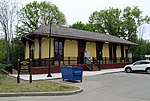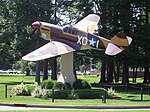2014 Bedford Gulfstream IV crash

American millionaire philanthropist Lewis Katz and six others were killed in a Gulfstream IV crash in Bedford, Massachusetts, on 31 May 2014. Katz, the co-owner of The Philadelphia Inquirer and several major sports teams, had chartered the twinjet for a day trip from Atlantic City, New Jersey, to Concord, Massachusetts. In addition to several personal friends, he had also invited Edward G. Rendell, a former governor of Pennsylvania, who was unable to accept.The flight crew consisted of pilot-in-command James McDowell, of Georgetown, Delaware; co-pilot Bauke "Mike" de Vries, of Marlton, New Jersey; and flight attendant Teresa Anne Benhoff, of Easton, Maryland. The pilots attempted to take off with the airplane's gust lock inadvertently engaged, which resulted in the plane overrunning the runway and crashing into a ravine. All seven occupants of the plane were killed.
Excerpt from the Wikipedia article 2014 Bedford Gulfstream IV crash (License: CC BY-SA 3.0, Authors, Images).2014 Bedford Gulfstream IV crash
Geographical coordinates (GPS) Address Nearby Places Show on map
Geographical coordinates (GPS)
| Latitude | Longitude |
|---|---|
| N 42.468888888889 ° | E -71.267777777778 ° |
Address
01731
Massachusetts, United States
Open on Google Maps








